PVC vs TPO: Best Houston Roof Membrane for Heat
By Shantell Moya · 3 months ago · 14 min read
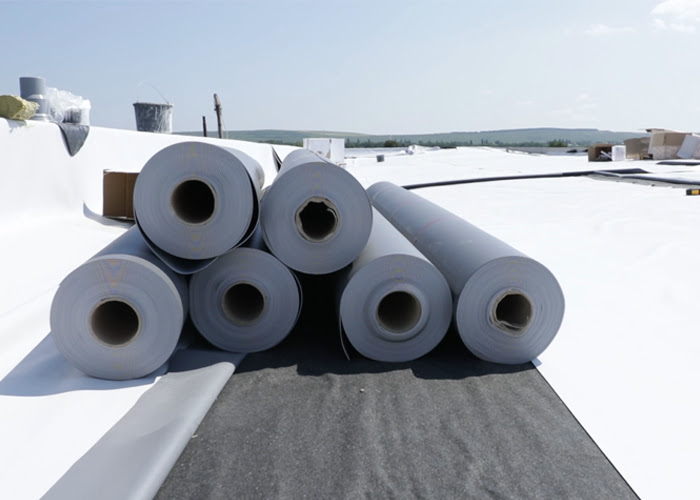
Houston’s commercial buildings face about 102 days each year when temperatures climb past 90 degrees Fahrenheit, and on top of that, morning humidity usually tops 90 percent. It’s a brutal combination that tears up roofs way faster than most places in the country and sends the cooling bills sky-high. PVC and TPO membranes are now the top choice for building owners putting up commercial roofs, and there’s a solid reason – the two types bounce solar heat away very well and hold up much better when this heat makes them expand and contract.
Which membrane you pick will affect your energy bills for the next couple of decades. A 10,000-square-foot warehouse can run 10-15 degrees hotter or cooler just on the basis of which membrane sits up there. Building owners who pick the wrong one can find themselves paying thousands extra every year to cool the place, not to mention having to replace their roof far sooner than they should.
Each membrane responds to Houston’s intense weather differently, and the differences might shock you. Some of what building owners think they know about these materials turns out to be completely wrong.
Let’s compare these two popular roofing materials to beat Houston’s intense heat!
Heat Reflectivity Ratings
Houston summers are brutal – August temperatures climb to 100 degrees, and your roof membrane becomes your best defense against that relentless heat. PVC and TPO membranes excel at bouncing solar energy right back into the air before the heat can get into your building. On paper, the performance gap between these two materials looks small. Once you open your monthly utility statement, though, the difference turns very noticeable.
PVC membranes bounce back somewhere around 80 to 85 percent of the solar energy that hits them. TPO membranes work well, too, but usually land in the 70 to 80 percent range. That 5 to 15 percent difference doesn’t sound like a big deal until you start doing the math on what this actually means for your facility. On a standard 10,000-square-foot warehouse roof, the extra reflectivity from PVC can actually lower your interior temperatures about 3 to 5 degrees during those very hot afternoon hours. Your HVAC system doesn’t have to work nearly as hard, and you could see a few hundred dollars shaved off your energy bill each month.
Testing by the Cool Roof Rating Council measures something called the Solar Reflectance Index for these membranes. White PVC membranes usually score somewhere between 100 and 110 on the SRI scale, and white TPO membranes usually fall into the 90 to 105 range. Higher numbers mean that the membrane works better at reflecting heat and keeping the surface temperatures down.
Facility owners discover how the reflectivity changes as the membrane ages. Houston’s air carries plenty of pollen, dust, and general pollution that slowly settles on the roof surface and forms a thin film of grime over time. After about three years of exposure, that bright white membrane won’t bounce heat back like it did the day the crew installed it. PVC membranes hang onto their reflective properties better over the long haul because the surface material resists dirt buildup better than TPO.
How Houston’s Climate Affects Your Roof
Houston’s weather is very brutal on roofing membranes. Scorching summers usually hit triple digits, and then winter throws you a curveball with unexpected freezes. These constant temperature changes make your roof expand and contract like an accordion that never stops playing.
TPO deals with this temperature cycling much better than PVC ever will. It actually stays flexible even after years and years of the Houston sun beating down on it constantly. PVC tends to get brittle over time with constant UV exposure day after day. Plasticizers that help PVC stay flexible start to leach out much faster in our intense heat.
Everything changes depending on where you’re located, though. Living anywhere near the Ship Channel or in the industrial areas means PVC might last longer, even with the UV problems. I see this scenario regularly – refineries and chemical plants that are always releasing pollutants that can eat away at TPO over time. PVC just shrugs off most industrial chemicals and acid rain like it’s nothing.
That brutal 2021 freeze was quite a tough test for the two materials across the entire city. TPO roofs handled that dramatic temperature drop much better because they stay flexible even in cold weather. Quite a few PVC roofs developed cracks when temperatures plunged from 70 degrees down to below freezing in just a matter of hours.
Hurricane season brings a completely different challenge to the table. Either type of membrane can stand against high winds when installed correctly and fastened securely. Differences show up in how they handle moisture afterward, though. TPO actually dries out faster and resists mold growth much better in our notoriously humid conditions.
Houston’s climate zones change quite a bit more than you’d expect them to. Something that works great in Katy might not work nearly as well in Galveston. Your exact location and the day-to-day conditions your building experiences definitely make a difference in how long these membranes are going to last you.
The True Cost of Ownership
Comparing TPO versus PVC roofing costs at the supply store doesn’t give you the full picture. TPO materials will run you somewhere between three and seven dollars per square foot, and PVC usually falls in the four to eight dollar range. That extra dollar or two per square foot can add up fast across an entire commercial building.
Actual costs become obvious once that roof is in place. PVC membranes have a track record of holding up for twenty to thirty years in Houston’s punishing climate. TPO membranes usually need replacement somewhere around the fifteen to twenty-year mark. A TPO roof will probably need replacing twice in the time that it takes to replace a PVC roof just once. Every time you swap out a roof, you’ll deal with more labor costs, material bills, and business disruptions that can hit hard during the busy season.
Energy savings can make a bigger dent in your budget than most building owners think. That five to ten percent difference in reflectivity between these two materials actually shows up as dollars on your monthly electricity bills. Houston businesses already face some of the steepest cooling costs in the country during our relentless summer months. Even a modest improvement in how much heat your roof bounces back can save you a few hundred dollars each month on a mid-sized commercial property.
Insurance carriers are catching on to this difference as well. A few Houston-area insurers have started giving lower premiums to buildings with PVC roofing systems, mainly because PVC holds up better when the bad weather hits. Warranty protection is another place where you’ll see a gap between these materials – PVC warranties usually cover more types of damage and last quite a bit longer than TPO ones.
Maintenance costs tell another part of this story. TPO membranes usually need more inspections and repairs in Houston’s intense heat and humidity. Local roofing contractors usually charge less for PVC membrane repairs because the material bonds more reliably during heat-welded fixes and makes the repair more likely to last.
Houston Weather and Your Membrane Installation
Houston’s weather will throw you some curveballs when it comes time to install either one of these membrane systems. Humidity down here completely changes the game for how each material is going to behave during the installation process. PVC actually performs much better in our swampy climate, and there’s a pretty obvious reason for that. PVC’s solvent welding process needs moisture in the air to cure the way it’s supposed to. Solvent contact with the membrane material starts a chemical reaction that gets stronger and works even better when humidity levels are high. TPO is a completely different animal and needs heat welding, and it can become a big headache when our dew points start climbing above 70 degrees. That hot air gun has to burn off the moisture first, and when the air feels thick enough to cut with a knife, that process can seem to drag on forever.
Your best shot at landing quality installation work is limited to November through February. Even during those cooler months, the morning dew is going to delay your start time until around 10 AM on most days. Once April rolls around, those afternoon thunderstorms are going to shut down your operation by 2 PM nearly every day straight through October. Savvy contractors have learned to plan their schedules around these very narrow windows.
You need to find crews who actually know how to handle these tough conditions, and that matters more than most building owners think.
PVC installation needs workers who know the solvent ratios and can make adjustments on the fly when the temperature starts swinging around. TPO calls for technicians who can read the moisture meters accurately and have the experience to know that they should just wait for better weather conditions. Not every roofing contractor in Houston actually has these particular skills – even though plenty of them will tell you they can install either system without any problems.
Substrate preparation also has to change depending on the type of building structure you have. Most commercial buildings around Houston have either concrete or metal decking systems, and they all hold moisture differently. Concrete decks are going to need some extra drying time so you can securely attach the membrane. Metal decks can develop some condensation problems underneath that will create big adhesion problems if you don’t take care of them first.
Energy Codes That Affect Your Rebates
Houston has pretty strict energy codes that help you choose which membrane works best for your commercial roof project. PVC and TPO membranes alike will meet all the necessary Texas laws without any problems. The two materials each handle certifications and rebate programs a bit differently.
PVC membranes usually bounce back much more sunlight than most TPO options on the market. This extra reflectivity can make a big difference if you want to earn LEED points for your building project. Houston’s green-building market has grown significantly over the past few years, and those LEED points have become more valuable than ever for developers hoping to draw eco-minded tenants to their properties.
CenterPoint Energy offers some pretty generous commercial efficiency rebates that can reduce your roofing costs. Plenty of contractors miss that your membrane has to meet very exact reflectivity standards if you want to snag the biggest incentive possible. Most PVC products meet these benchmarks with room to spare. Quite a few TPO membranes only squeak past the minimums, though. Energy Star certification numbers also range quite a bit between PVC and TPO products that are currently on the market. You should check the exact ratings for any membrane you’re thinking about because not all products in the same category perform the same way across every job.
Once you apply for some types of Houston building permits, you have to turn in full, whole-building energy models as part of the paperwork. Your roof membrane choice will directly affect these complex calculations since the roof plays a big part in your building’s total heat gain over the year. A more reflective membrane can actually improve your energy model results and help you pass through the city’s review process much faster.
Houston’s Green Building Resource Center maintains a complete list of recommended commercial roof products that hold up well in our tough climate. They update the list regularly and use actual performance data collected from local commercial buildings. I always recommend taking a close look at their latest list as you make the final call on which membrane to put on your project.
Pick the Right Membrane for Your Building
Your building type actually plays a much bigger role in your membrane choice than most property owners know. A warehouse sitting close to the Ship Channel runs into completely different environmental problems compared to an office tower over in the Galleria area. Restaurant owners need to think about grease exhaust from their kitchen vents, while warehouse operators are usually more concerned about forklift traffic rolling across their roof whenever HVAC techs need to get up there for repairs.
Where your building sits can actually make or break this entire choice. Buildings located anywhere near Houston’s refineries or chemical plants will benefit from a PVC installation. Chemical fumes that drift over from the industrial plants will eat away at TPO membranes faster than most property owners expect. PVC membrane material just handles that chemical exposure better over the long haul.
Most Houston commercial buildings are loaded with massive HVAC units that can weigh a few tons each sitting on their roofs. Maintenance crews need to access these units regularly, and you want a membrane that won’t get punctured every time a tech walks across it. Either membrane type works fine for this, though TPO holds up a little better with repeated hits and foot traffic over time. Your expected ownership timeline changes the choice completely. Spec developers who buy properties and flip them within five years or so have completely different needs than businesses that stay in the same location for decades. TPO can cost less at the start if you flip the property, though PVC’s longer lifespan turns out to be more worth it for owners who stay put for the long haul.
Solar panel installations have become very popular throughout Houston over the past few years. If solar panels are in your future plans, each membrane type works differently during the installation. Either material works just fine with solar installations, though TPO’s bright white surface actually bounces more light back to the panels themselves.
Houston’s flooding history matters for this decision. If your area took on water during Harvey or any of the big storms we’ve had, you need a membrane that won’t break down or fail after water exposure now and then.
A Secure Home Starts with a Solid Roof
After everything we’ve covered about membrane roofing, you’re probably standing at a crossroads with a map pointing in two different directions – which actually makes sense because you won’t pick the cheapest option or the one with the flashiest name. Each material has earned its place in Houston’s roofing market, and what works wonderfully for your neighbor’s warehouse might not be the best fit for your office building. Your exact situation, from your building’s daily use patterns to how long you’ll own it, will all play into making the smartest choice.
One thing I’ve seen after years in this business is how much the quality of the installation can make or break these roofs in our intense Texas heat. A person could have the most expensive and highest-rated membrane material available on the market. But without a skilled installation that takes Houston’s local weather patterns into account, the money gets thrown onto roofs and evaporates in the summer sun. Contractors from other regions might not completely understand the installation windows our humidity creates here, and the small timing differences separate roofs that last twenty years from ones that start having problems after just five.
Houston is still becoming hotter as the city spreads in every direction. These membrane options have proven they can handle our tough weather, as long as you choose the right one and have it installed by experienced pros.
Roof Republic takes on commercial and residential roofing projects across Texas, with most of our work happening right here in the Greater Houston area. Your roof has cost quite a bit, and it keeps your family safe, so you want to work with a roofing company that understands the local weather and market conditions. Give us a call for a free inspection, and we’ll do the job right!

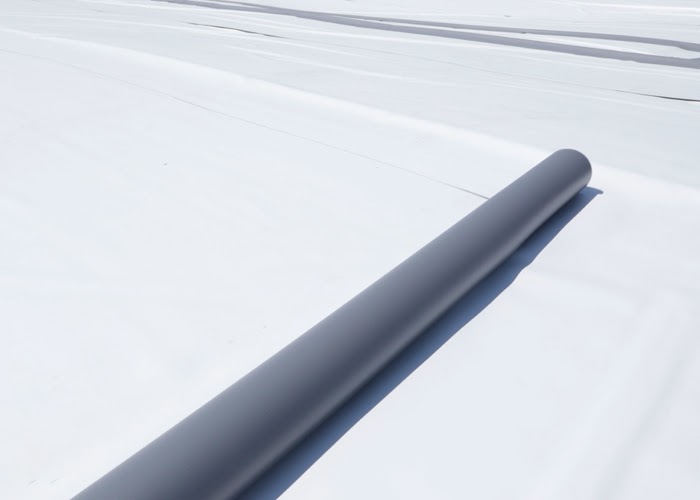
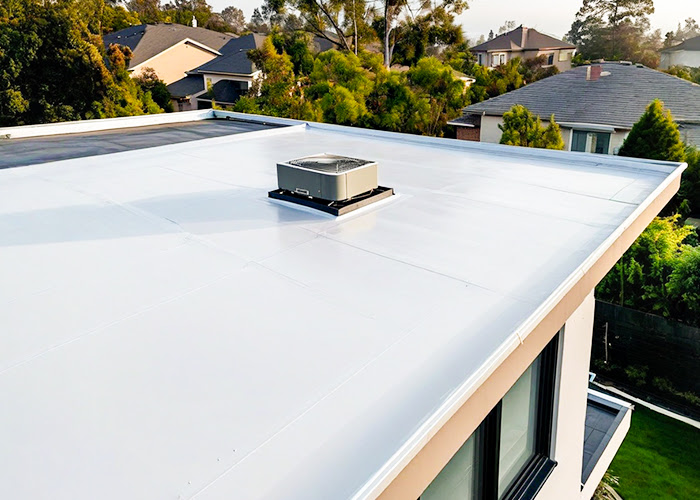
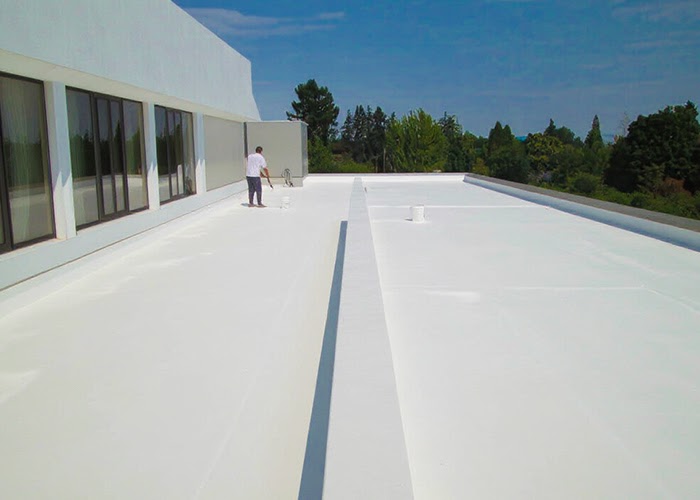
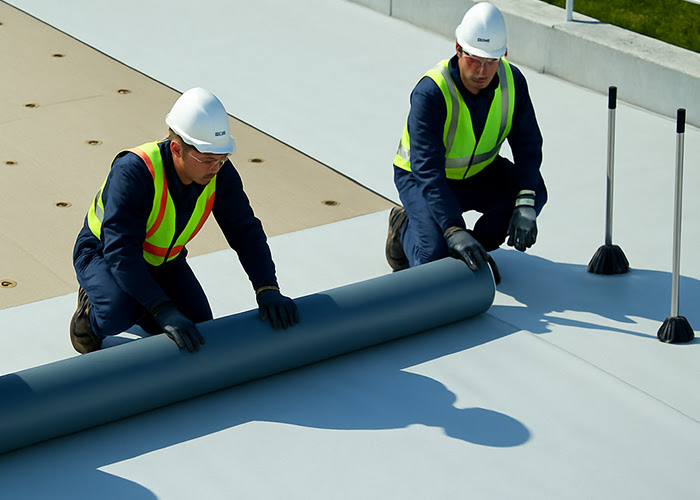
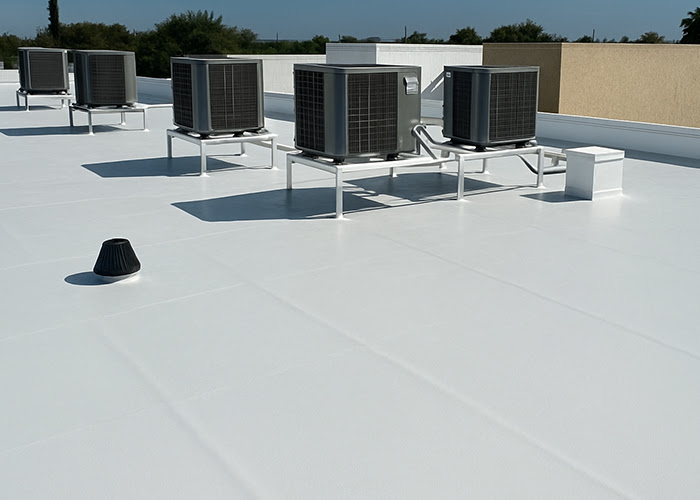
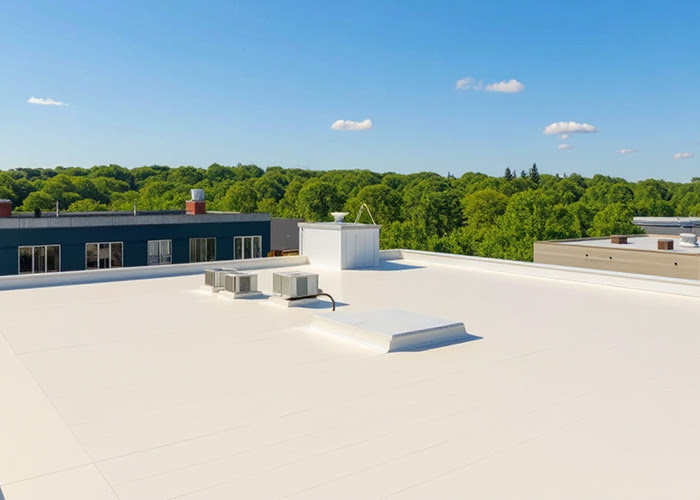

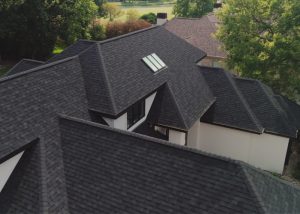
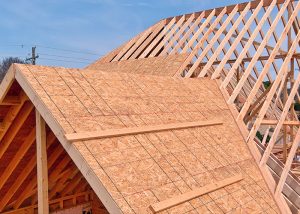

Comments
Sort by: